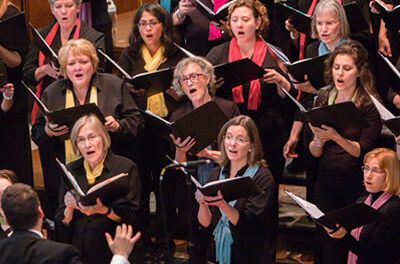One of the significant highlights of the tenure of Grant Llewellyn as music director of the North Carolina Symphony has been a number of fine recordings featuring guest soloists. Many have been with cellist Zuill Bailey. This concert featured a rare performance of the Cello Concerto (1957) of William Walton (1902-83) and the colorful tone poem Don Quixote: Fantastic Variations on a Theme of Knightly Character, Op. 35 (composed 1897, 1st performance 1898), by Richard Strauss. Guest violist Roberto Díaz joined the Don Quixote of Bailey as his faithful Sancho Panza.
Since both concert performances are being recorded followed by a “patch” session to provide clean recordings that can be edited, bring cough drops and silence electronic noise makers. I strongly recommend attending the “Meet the Artists” that precedes the concert. Bailey and Díaz discussed a wide variety of musical topics and focused on aspects of recording. Meymandi Hall‘s concert stage is a forest of microphones set up by the Telarc company. The new acoustical shell above the stage has greatly improved the sound projection of the orchestra and soloists.
Walton’s Cello Concerto was commissioned for Gregor Piatigorsky, who gave the first performance with the Boston Symphony led by Charles Munch. Walton skillfully combines the cello with the orchestra. He exploits the solo instrument’s singing line in two slow movements, separated by a fast-paced scherzo. The movements are Moderato, Allegro appassionato, and Lento: Allegro molto.
Bailey made the strongest possible case for the Walton concerto joining with the Dvořák and the Elgar at the heart of the cello repertoire. His tone was gorgeous and his articulation and intonation were superb. Llewellyn brought out the delightful subtleties of Walton’s translucent first movement scoring with its ethereal strings and picante percussion. The headlong “perpetuum mobile” was wonderfully captured. The amazing, extraordinary third movement was a wonder to hear and see! It is four variations on a theme, but the second and third are for cello alone (sort of extra cadenzas) while orchestra alone is exploited in the first and third.
Strauss’ richly imaginative and virtuosic Don Quixote is too seldom encountered in orchestras’ regular season programming. Strauss vividly portrays the characters and events from the Cervantes novel in sound. The deluded Don is played by the cello while Sancho Panza, by the viola. Every section of the orchestra is used to the max to color the various characters and events. Multiple themes are in the extended Introduction followed by ten vivid variations bring the picaresque episodes to life. A moving Epilogue ends the piece quietly.
If you have never heard Don Quixote in live performance, rush to get a ticket! You might someday hear as good a performance but never a better. Bailey and Díaz were magnificent! Bailey’s range of color and dynamics were amazing, as were the emotional depths he brought out. The Don’s death scene was very moving. Díaz’s viola has a full, warm sound that readily projected into the hall, and he nicely matched Bailey in characterization. Llewellyn skillfully unleashed the orchestra players’ virtuosity. Hearing the horns and brass portraying the bleating sheep in the second variation in performance added so much to the experience. Every section was in top form, with gorgeous contributions from woodwinds and percussion. The strings responded beautifully to the high standard set by Bailey and Díaz. I look forward to adding their future CD to my collection.
This program repeats April 6. See our sidebar for details.











